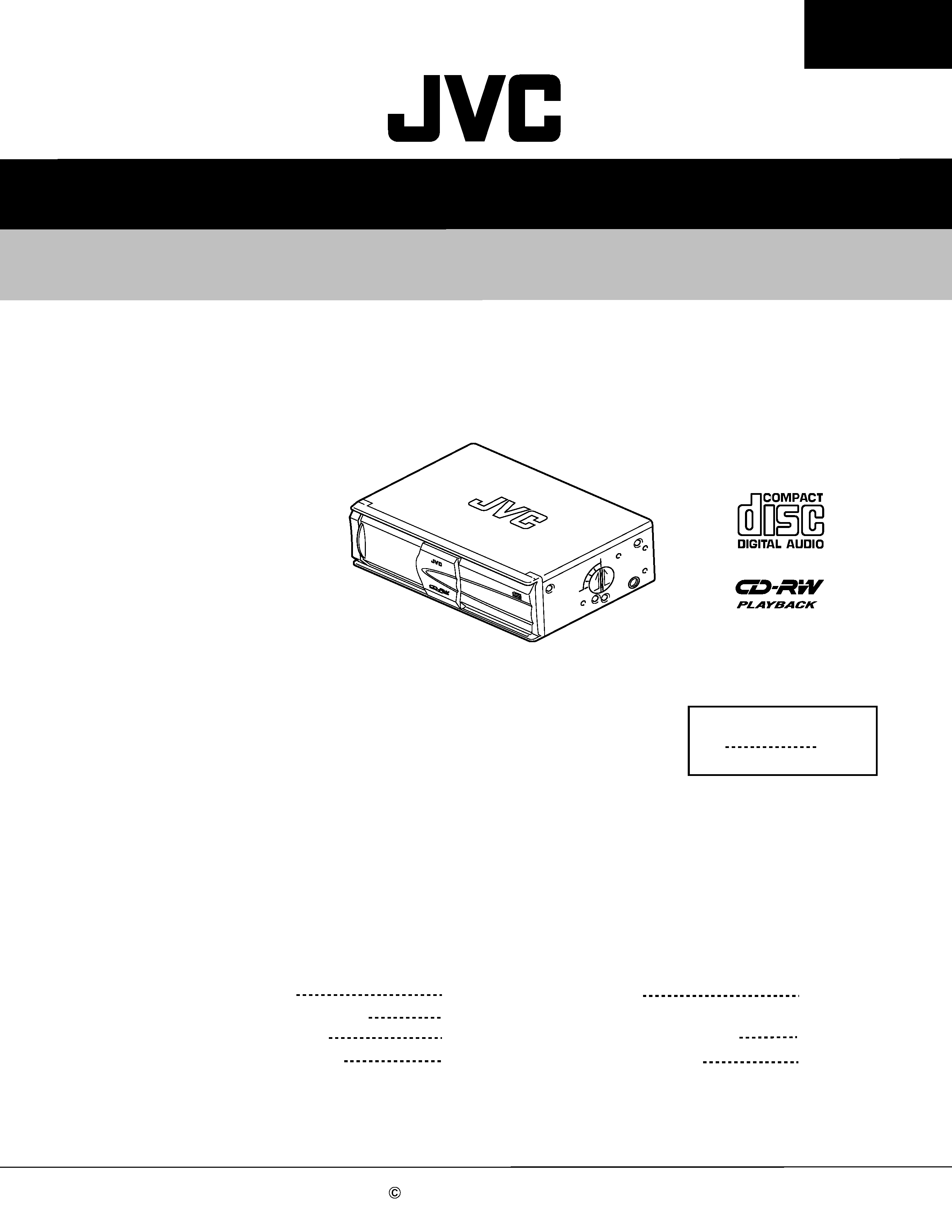
SERVICE MANUAL
CD CHANGER
No.49658
Dec. 2001
COPYRIGHT
2001 VICTOR COMPANY OF JAPAN, LTD.
CH-X488
CH-X488
Area Suffix
UF
China
COMP
ACT
DIS
C C
HAN
GER
12
D
IS
C
CH
-X
488
Contents
Safety precaution
Preventing static electricity
Disassembly method
Forced eject procedures
1-2
1-3
1-4
1-20
Trouble shooting
Flow of functional
operation until TOC read
Description of major ICs
1-21
1-23
1-27
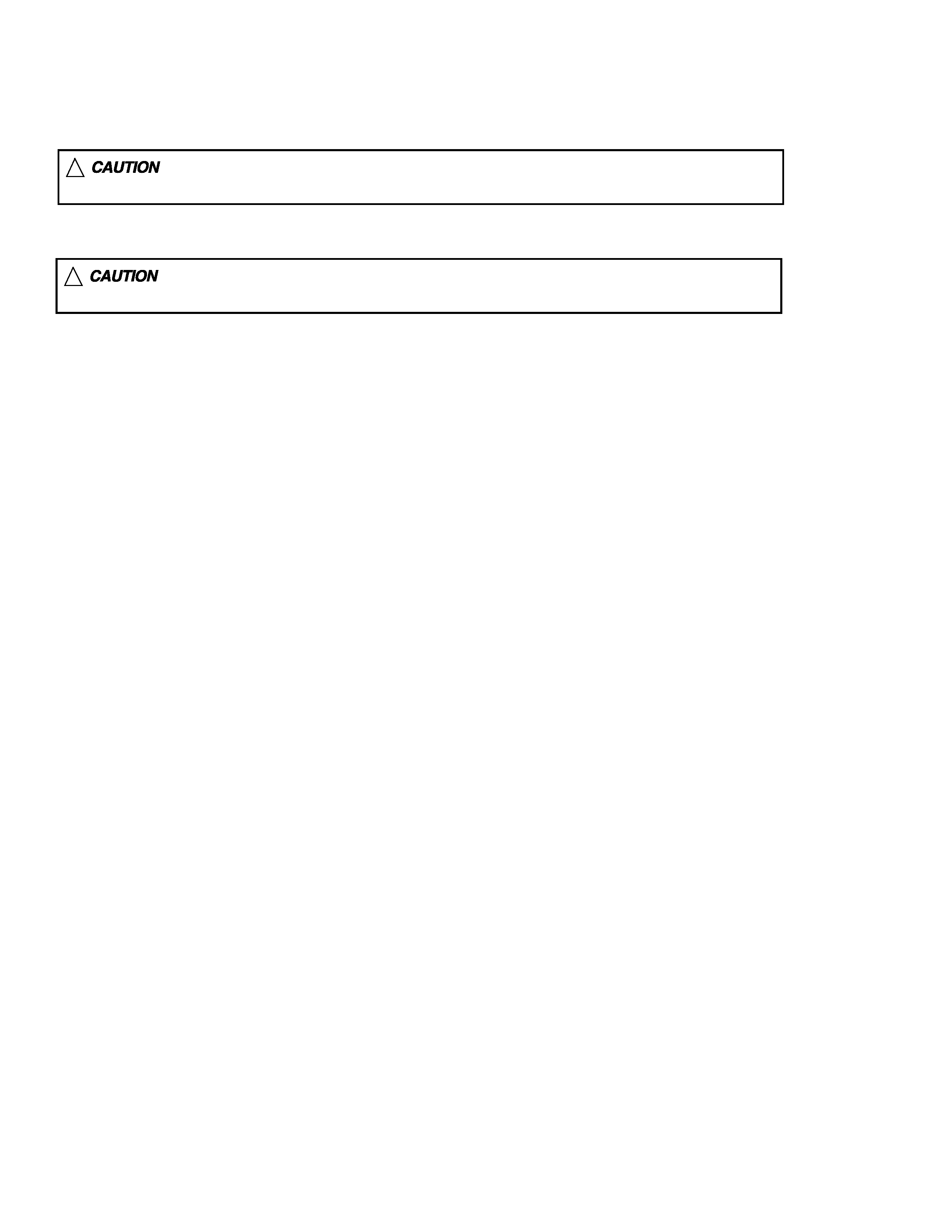
CH-X488
1-2
!
Burrs formed during molding may be left over on some parts of the chassis. Therefore,
pay attention to such burrs in the case of preforming repair of this system.
Safety precaution
!
Please use enough caution not to see the beam directly or touch it in case of an
adjustment or operation check.
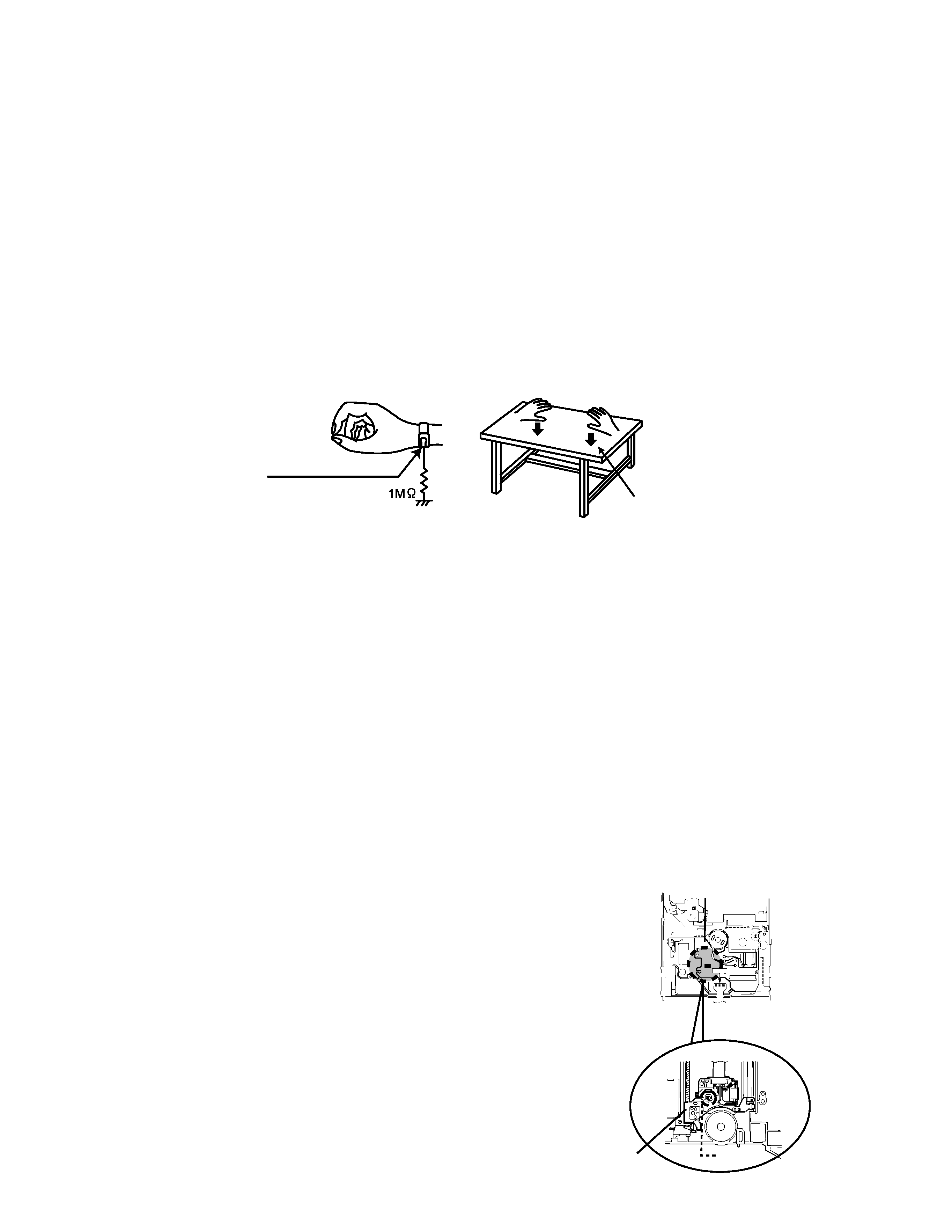
CH-X488
1-3
Preventing static electricity
1.Grounding to prevent damage by static electricity
Electrostatic discharge (ESD), which occurs when static electricity stored in the body, fabric, etc. is discharged,
can destroy the laser diode in the traverse unit (optical pickup). Take care to prevent this when performing repairs.
2.About the earth processing for the destruction prevention by static electricity
Static electricity in the work area can destroy the optical pickup (laser diode) in devices such as CD players.
Be careful to use proper grounding in the area where repairs are being performed.
2-1 Ground the workbench
Ground the workbench by laying conductive material (such as a conductive sheet) or an iron plate over
it before placing the traverse unit (optical pickup) on it.
2-2 Ground yourself
Use an anti-static wrist strap to release any static electricity built up in your body.
3. Handling the optical pickup
1. In order to maintain quality during transport and before installation, both sides of the laser diode on the
replacement optical pickup are shorted. After replacement, return the shorted parts to their original condition.
(Refer to the text.)
2. Do not use a tester to check the condition of the laser diode in the optical pickup. The tester's internal power
source can easily destroy the laser diode.
4.Handling the traverse unit (optical pickup)
1. Do not subject the traverse unit (optical pickup) to strong shocks, as it is a sensitive, complex unit.
2. Cut off the shorted part of the flexible cable using nippers, etc. after replacing the optical pickup. For specific
details, refer to the replacement procedure in the text. Remove the anti-static pin when replacing the traverse
unit. Be careful not to take too long a time when attaching it to the connector.
3. Handle the flexible cable carefully as it may break when subjected to strong force.
4. It is not possible to adjust the semi-fixed resistor that adjusts the laser power. Do not turn it
Attention when traverse unit is decomposed
1.Solder is put up before the card wire is removed from connector on
the CD substrate as shown in Figure.
(When the wire is removed without putting up solder, the CD pick-up
assembly might destroy.)
2.Please remove solder after connecting the card wire with
when you install picking up in the substrate.
*Please refer to "Disassembly method" in the text for pick-up and how to
detach the substrate.
(caption)
Anti-static wrist strap
Conductive material
(conductive sheet) or iron plate
Soldering
Pickup unit
Traverse mechanism PCB Ass'y
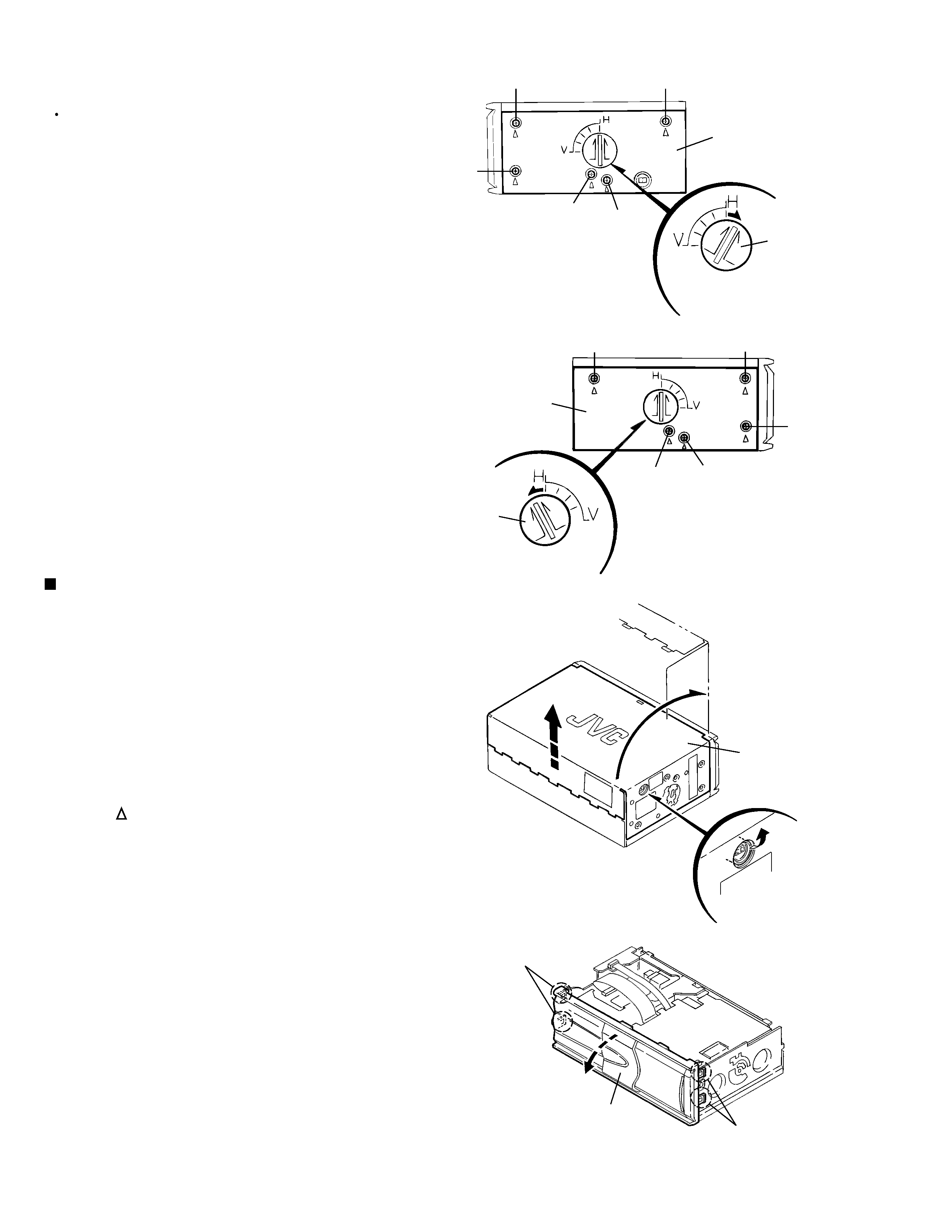
CH-X488
1-4
After removing the exterior (top and bottom).
Proceed to the pickup replacement section.
When applying grease, refer to the exploded view.
Use new grease.
1.
2.
3.
Remove the exterior (required section only).
The mechanism section is designed so that each unit
can be removed separately.
When
reassembling,
refer
to
the
assembling
precautions. (Use new grease when applying grease.)
1.
2.
3.
Disassembly method
<Mechanism section>
<Exterior section>
<Replacement of the pickup>
Remove the two screw A
to unlock the mounting
direction knob located on the side of the main unit.
Turn the mounting direction knob in the direction of
the arrow using a coin, etc. to remove it. (The knob
can be removed only when it is set to this position.)
Remove the four top cover fixing screws B at the
triangle
marks on the side of the main unit. (Perform
the same operation on both sides.)
Turn the unit upside down so the bottom surface is
facing upward.
Lift the rear edge of the bottom cover slightly and lift
the side by grasping the DIN jack section on the side
panel, then turn it toward the front (raise upward) to
remove the bottom cover.
Unhook the four catches located on both sides of the
front panel, and turn the front panel toward the top
cover (lower down) to remove the front panel.
1.
2.
3.
4.
5.
6.
Removing the bottom cover and front
panel assembly
(See Fig.1 to 4)
Perform operations according to the items to be
disassembled.
Fig. 1
Fig. 2
Fig. 3
Fig. 4
A
Unhook catches
Unhook catches
B
The front panel can be
separated by raising the cover.
Remove A and turn in
the direction of the arrow
Remove A and turn in
the direction of the arrow.
Slightly lift the jack
section to remove.
B
B
B
B
B
A
B
B
Bottom cover
Knob
Bottom cover
Knob
Bottom cover
Front panel
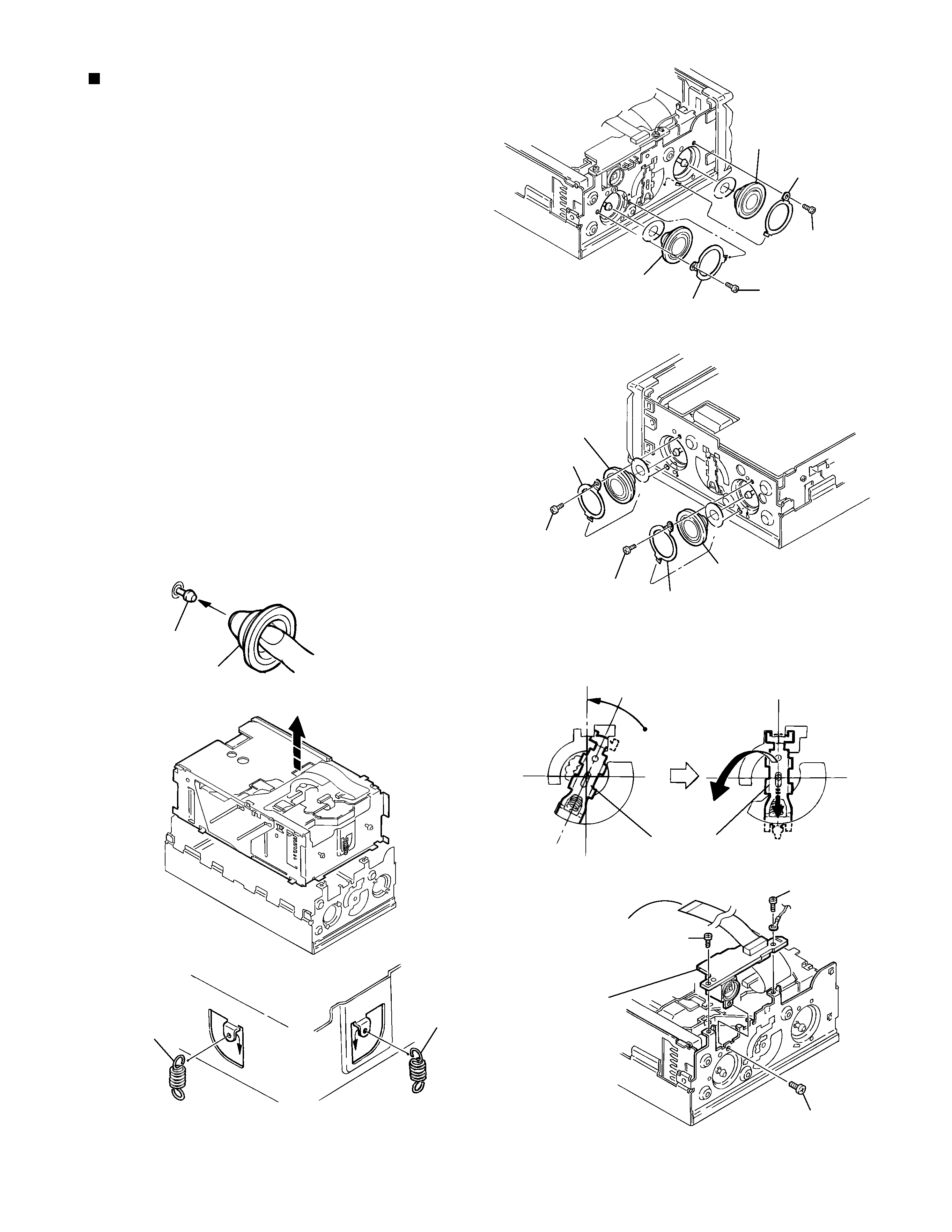
CH-X488
1-5
Remove the four damper bracket fixing screws C to
remove the damper brackets.
Pull out the dampers, being careful not to damage
them.
When reattaching a damper, insert your finger to
push out the center of the damper to mount it on the
damper shaft, as shown in Fig. 6-1.
Turn the damper spring bracket toward the top at a
right angle as shown in Fig. 7, then push down the
lower side of the damper spring bracket to lift it off.
Remove the three fixing screws D and E on the DIN
jack board assembly.
Lift the changer unit upward.
Remove the damper springs from the mechanism
chassis if required.
To reassemble, refer to the
diagram below.
1.
2.
3.
4.
5.
6.
Removing the top cover
(See Fig.5 to 9)
Fig. 5
Turn to the top position (at a right angle),
then push down to lift off.
Lift the changer unit upward
How to attach the damper springs
Silver
(mechanism side)
Black
(magazine side)
Mechanism
Chassis
Remove the flexible ribbon
wire if required
C
Apply alcohol to the shaft then immediately
attach the damper. (After attaching, check
that the shaft is correctly inserted.)
Push out with your finger
before attaching
C
C
C
E
E
D
Fig. 6
Fig. 7
Fig. 9
Fig. 6-1
Fig. 8
Fig. 8-1
Damper shaft
Damper
Damper spring
Damper spring
DIN jack board
Damper spring bracket
Damper
Damper bracket
Damper
Damper bracket
Damper
Damper bracket
Damper bracket
Damper
